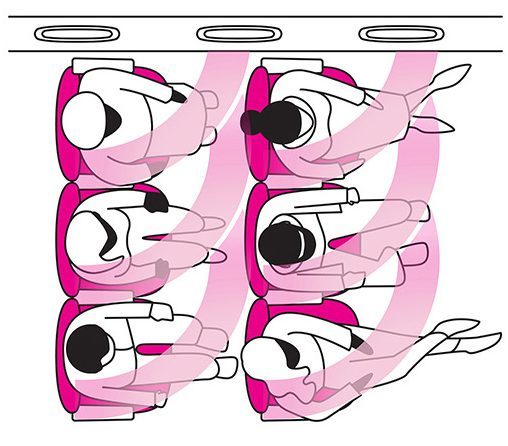
A Seattle-based technology company called Teague has developed a new simple, installable product that could help protect passengers aboard aircraft by decreasing the risk of inflight transmissions of viruses such as COVID-19.
The product called “AirShield” is designed to fit on already existing air vents inside airplane cabins to enhance airflow and help reduce the spread of bacteria by creating an invisible “shield” around passengers.
- See also:
We know what you might be thinking, most aircraft are already equipped with high-efficiency particulate absorbing (HEPA) filters that remove a majority of air contaminants. Teague argues that these measures are not enough.
“The path of immediately exhaled water vapour droplets in the aircraft cabin environment wields the potential for virus spread,” the company’s website explains. “While the cabin airflow helps reduce the risk of large scale virus spread on board, it does little to protect those sitting within a few seats of a sick passenger.”
By developing their own computerized simulation, the company was able to create a simulation to illustrate the airflow inside an aircraft cabin and trace the water vapour droplets resulting from someone not covering their nose and mouth while they sneeze.

Teague
In times like these, we all know the vital importance of safe sneezings, such as using your elbow, but this hypothetical is for those who haven’t gotten the memo — let’s face it, we all know a few.
According to the simulation, without additional airflow, there is a likelihood that water vapour droplets will spread to adjacent passengers. AirShield operates by creating an invisible screen around individual seats that disrupts normal air circulation, the company explains.
“When a passenger breathes, coughs, or even sneezes, the water vapour is contained within that passenger space and is immediately redirected downwards and out of the cabin to the HEPA filtration units before it has the opportunity to enter the personal space of a neighbouring passenger.”

Teague
The product itself is still in the early phases of engineering development and prototyping. However, the simplicity of its design would allow for rapid deployment to help ease the minds of travellers surrounding air travel during these uncertain times.
And aircraft are not the end of how AirSpace could be utilized. Teague is also investigating possible usages for venues, including gyms, restaurants, retail, and workspaces.
“We see the future of air-conditioning and circulation having a role to play in creating sanitary and safe environments across the globe, and here at Teague, it’s something we are proudly exploring.”

